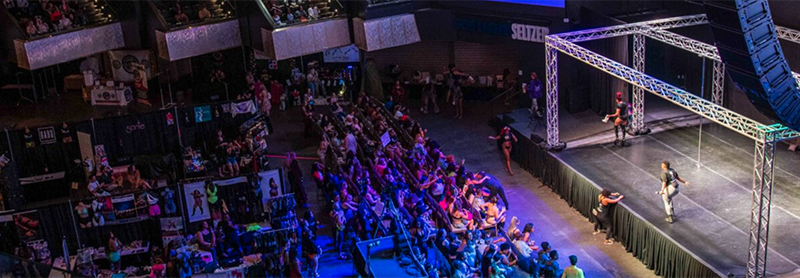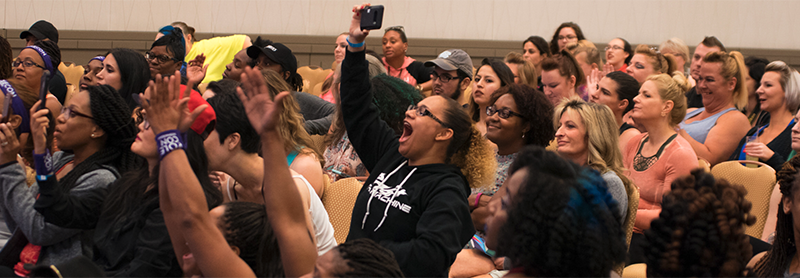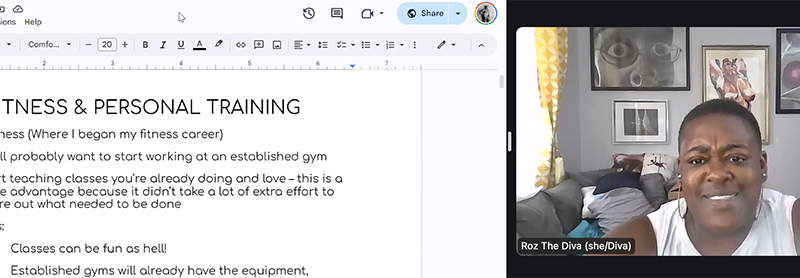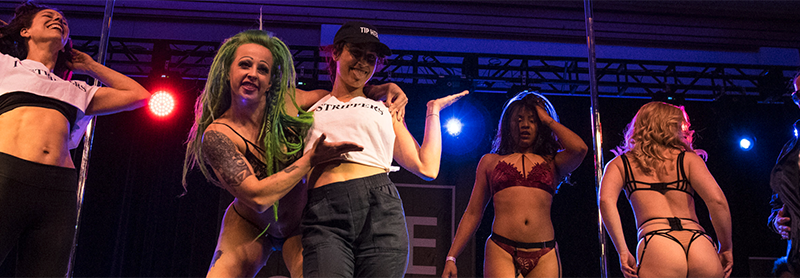[memberonly level=“Group Membership for Businesses of 2-5 individuals, Student, Individual or Solo-Preneur”] Please note that…

What you need to know about rigging as a pole event producer and performer
This resource post was created in conjunction with IPIA partner Pole Art Co,. they provide rigging support for pole events.
Many pole events including (but not limited to) showcases and competitions may hold pole events outside of established pole/aerial studios or clubs with permanently mounted poles. To do that, event producers may choose to use stage poles for performers/competitors or to use an independent metal structure known as a truss to support the poles which can be placed on just about any stage, portable decking, or other flat surface.
Event producers should understand how to provide safe equipment configurations for polers. Polers would benefit from understanding what safe looks like before they perform or compete.
This post is broken into two parts, the first is understanding the truss system and the second part is understanding the pole itself.
Understanding the truss system
One of the most common methods of setting up and anchoring poles in a performance space that doesn’t have permanent mounted poles is using a truss system.
Trusses are the metal square-like structures that a pole can be anchored to when there isn’t an option to mount the pole directly to the ceiling. These sections are interconnected by pins at joints, creating a framework that can support the weight and movement of performers. Truss systems are highly versatile and are favored for their adaptability to various pole events.
Since trusses are infinitely customizable, they should be designed and configured for the intended purposes of the event including the known intensity and quantity of the performances, the view for the audience, the physics of forces applied during the performance (to minimize sway), and any lighting/sound needs (lighting and sound may also be attached to the truss). Trusses can be rented or owned and should always be installed by rigging professionals.
Some truss setups have four “legs,” and look more like a box, while others have three or even two and look more like a “T” or an “I.” In the case of a two-legged truss system, the use of cross bracing becomes critical. Cross bracing is a bar that connects a horizontal and vertical truss at 45 degrees and helps distribute the forces exerted on the pole to help reduce unwanted or unpredictable sway during a performance.
Buying or renting a truss is not inexpensive, however, cutting corners on safety is not advised.
Understanding truss-mounted poles
Pole manufacturers, like IPIA partners X-POLE and Gaia Pole (amongst others), make competition-grade poles specifically designed for events and competitions. These are different from the pole you would buy for your house in the following ways:
- These poles have less joints across the entire pole (usually one joint).
- These poles are not tension mounted; they have a screw mount at the top rather than a tension “dome.”
- These poles are double-walled, heavier than home poles, and are more durable.
In the case of a truss-mounted pole, a plate will be anchored to the top of the truss. The pole is then securely mounted into the truss plate. A tension-mounted pole (with a dome or other not-screwed in top) should NEVER be used with a truss.
In addition to being secured to the truss with a truss plate, some poles may also be either screwed into the stage floor or suspension-mounted into the floor, depending on the venue’s regulations and preferences. These additional measures further stabilize the pole and enhance safety.
The pole should be checked throughout the performances to confirm tension has not been compromised. Having a truss technician on standby is a good idea during your event.
Final thoughts
Event producers, whenever possible, work with a truss vendor who has experience with pole rigging. If you are unable to work with someone with pole experience, provide them with images and videos from existing pole events such as IPIA partner PoleCon. This can help explain what your needs. Remember, you can ask other pole event producers for help or email the IPIA for help. We are all here to keep the industry as safe and as successful as possible!
Performers and competitors, before you perform, double check that the pole is screwed into the truss and is not mounted using a tension “dome.” Also check that the pole has a limited number of joints. If you are unsure about the safety of the equipment, please speak up! It is better to delay or cancel an event than for anyone to get hurt.



